I want to preface this post by noting that time is a funny thing when it comes to birding. On Tuesday my friend Sofia and I set out on a quest to find the elusive Cerulean Warbler. I’ll get to the quest soon, but after dropping her off and returning home following a four-hour outing, I remarked via text message that the whole thing couldn’t possibly have lasted more than 45 minutes. She agreed, and no mystery there—time flies when you’re birding. During migration, the hours, days, and weeks especially seem to hurry along.
When we arrived at the known location of a Cerulean Warbler in the borough of Sewickley Heights (about 30 minutes southwest of Pittsburgh), the clock read 8:30. We had until about noon to achieve what we came for—I wanted a good photo of a Cerulean, something akin to what
was hoping to achieve this year—My 2025 birding goal was a decent photo of a Blackburnian Warbler. James knew what he was up against. Blackburnians enjoy leafy treetops and are maddeningly hard to photograph. Ceruleans prefer similar digs, and I had a similar challenge awaiting me. Meanwhile, Sofia was hoping to see, not just hear, a Cerulean for the first time in her life.We had some things working for us—
Cerulean Warblers are not common in Allegheny County, but they are reliable in Sewickley Heights. I’d seen one at this very spot a year ago.
Local eBirders had already located them this spring.
Can-do attitudes!
And some things were stacked against us.
Like Blackburnian Warblers, Cerulean Warblers like to hang out high, HIGH up in the forest canopy, especially where there are sycamore trees to forage in and water flowing below. They’re kind of like Yellow-throated Warblers that way, a bird I’ve also taken a stab at photographing from the shadows of a sycamore.
Like their Yellow-throated cousins, just spotting Cerulean Warblers is tough. Photographing them is tougher and is often the product of the bird graciously coming down to the mid-story level.
Their numbers have declined significantly over the decades, making them increasingly difficult to find. There was no guarantee the previously reported birds had stuck around.
The day was gray. Not good for photography.
I suck at photography.
The spot was an unassuming pulloff at the side of a road, but upon exiting the car one beholds what Frank Izaguirre describes in my podcast as western Pennsylvania’s green, mossy, damp, almost glowing green forests.
At this time of year, in this kind of habitat, you’re also greeted with a gorgeous chorus of birdsong—Wood Thrushes, American Redstarts, Scarlet Tanagers, Blue-gray Gnatcatchers, Yellow-throated Warblers, Red-eyed Vireos, and many others. A real tapestry, to recycle an overused metaphor.
I thought I heard a Cerulean Warbler moments after stepping out of the car, and maybe I did. Maybe not. Whatever the case, the song I heard went silent for a while, and we took some time orienting ourselves amid the glorious yet baffling choir. We were up to thirty species in a matter of minutes (what could take me an hour or more during a non-migration birdwalk), and when that many birds are belting their spring songs in unison—well, for me it gets a bit overwhelming and difficult to isolate them for identification purposes.
There’s a certain anxiety that comes with migration, when you can be seeing and hearing several dozen birds at a time. Exhilaration too. I experience both feelings simultaneously, but not in equal measure. Anxiety reigns at the beginning, but when my mind calms down, when I take a few moments to breathe, when I begin to measure what I’m hearing against what I know… that’s when pure exhilaration takes over.
I’d seen a Cerulean Warbler twice before, including when I photographed them at nearby Walker Park in the spring of 2023. I’m familiar with the bird, but by no means intimately so. I know their song in a general sense, an ascending, accelerating series of buzzes.
I’d studied up on the song in advance, but there’s no substitute for hearing a bird in the field. Recordings are useful, but limited. Like humans, birds speak in dialects, and their vocal repertoires are wide and varied. A recording of a bird made in upstate New York might vary significantly from one captured in western Pennsylvania.
As we moved up and down the road, I began to hear what I thought was a Northern Parula, another warbler with a buzzy, ascending song. Sofia disagreed with my song ID, and when I turned on the Merlin app, her hunch about my miscalculation proved correct. Merlin insisted what we were hearing was the Cerulean Warbler we so coveted. In this clip, a Red-eyed Vireo is determined not to shut the hell up, but in the background of its incessant chirRUP!, you can hear the ascending buzz I’m talking about.
And here I’d like to take a moment to celebrate a milestone in my birding career—mixing up a Northern Parula and a Cerulean Warbler represents my 14 thousandth misidentification. I look forward to reaching 15k, which at my current pace should occur sometime within the next two weeks.
Merlin is amazing, but Merlin is also capable of some big misIDs. We were by no means satisfied, and anyway we had goals—there were good looks and good photos to get. And here’s where time got goofy again. The space between first hearing that persistent buzz and the moment Sofia got her lenses on the bird (mission 1/2 accomplished!) felt like forever. The clock was ticking. Time would soon be up. Anxiety crept back in as I envisioned slinking back to the car in defeat. I could see it all unfolding—that afternoon some fellow Allegheny birder would blithely capture this very Cerulean as it bathed in the creek, sun-drenched and beautifully blue, and my misery would be twofold when their work appeared in Audubon magazine’s photography awards issue. All this to say, it felt like two hours looking up and not seeing a bird were packed into a space of 10 or maybe 15 minutes.
In reality, when we finally had the bird, plenty of time remained to spend with it. The day was dark and the bird was backlit, but the threatening rain was holding off enough that I could use my camera without fear. The warbler was in our sights—all we needed was for him to make himself presentable. And, lo!, he did! Now it was up to me and my trusty 150-600mm lens.
Voila!
After capturing these barely identifiable photos, we followed the bird until it flew off to parts of the forest unknown. In all, we counted three Ceruleans (three heard, one seen) over the course of our stay. Subsequent stops yielded many more wonderful birds, but no additional Ceruleans. In the end, Sofia got good looks. I got tenth-rate photos. Let’s call the mission 3/4 accomplished. When our four-hour-yet-somehow-45-minute birding adventure reached an end, it was time to head home, happy, but not, at least for my part, satisfied.
For now, the photos I got of a Cerulean Warbler in 2023 will continue to serve as my personal gold standard, even if the light filtering through the green foliage makes him look anything but cerulean.
Cerulean Warblers nest in Sewickley Heights. Will I seize the opportunity to return at a later date, when conditions are fairer, when the bird is more agreeable, to get that blue-ribbon shot? Will I manage a look at the female of the species for the first time ever? I don’t know!
Stay tuned.
Featured Photo—Wood Duck
After that photography debacle, I needed a win. On Wednesday morning, as I sat on the deck with a cup of coffee and nursing a sore neck, a wave of warbler song washed over me. Black-throated Green, Magnolia, Blackburnian, Bay-breasted, Tennessee… the inclement weather during the night had clearly pushed some migrating birds into my vicinity. The one I heard and vowed to capture was a Canada Warbler, but the beautiful blend of melodies began to sound like derision as I found myself unable to get a single picture of any warbler. I sat back down ready to concede defeat when out of nowhere a Wood Duck, chased by a Red-winged Blackbird, alighted on a dead branch not 20 feet to my right. A normally skittish species, this beautiful drake afforded me all the time I needed to adjust the manual focus and shoot at my leisure.
10/10 Recommends
Photographing Ducks
Ducks are big, beautiful, photogenic birds. They are rarely found 100 feet up in dense foliage darting indefatigably after bugs. Get a nice languorous duck in your lens and treat yourself to a bounty of photos.
That’s all for this week. Have you ever seen a Cerulean Warbler? Have you ever managed a photo of one you’re proud of? Has a Wood Duck ever practically landed in your lap and announced, I got yer photo right here, asshole! As always, tell me about it down below! 👇
Until next time, thanks for reading, and don’t forget to bird yer ass off!
nwb
Enjoy this post? Birding with BillBow’s weekly content will always be free, but you can help support my writerly and birderly dreams in the form of a paid subscription (save $10/year by choosing the yearly plan!).
Or buy me a beer. These warblers are making me thirsty!
Paid or not, thanks for being here! Happy birding!
This post was human generated. All photos by Nathaniel Bowler.

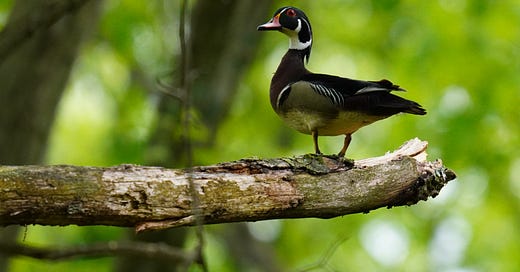




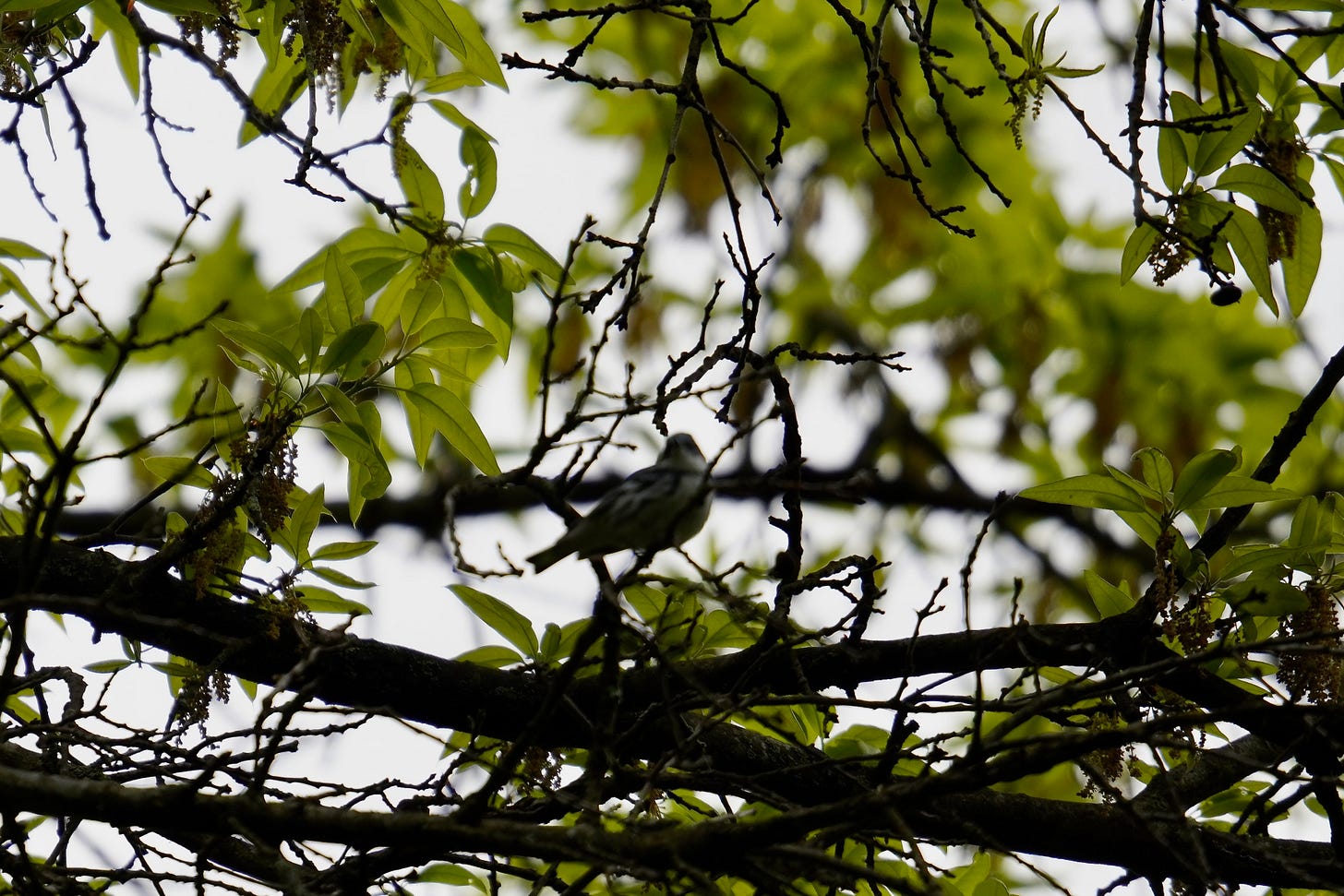
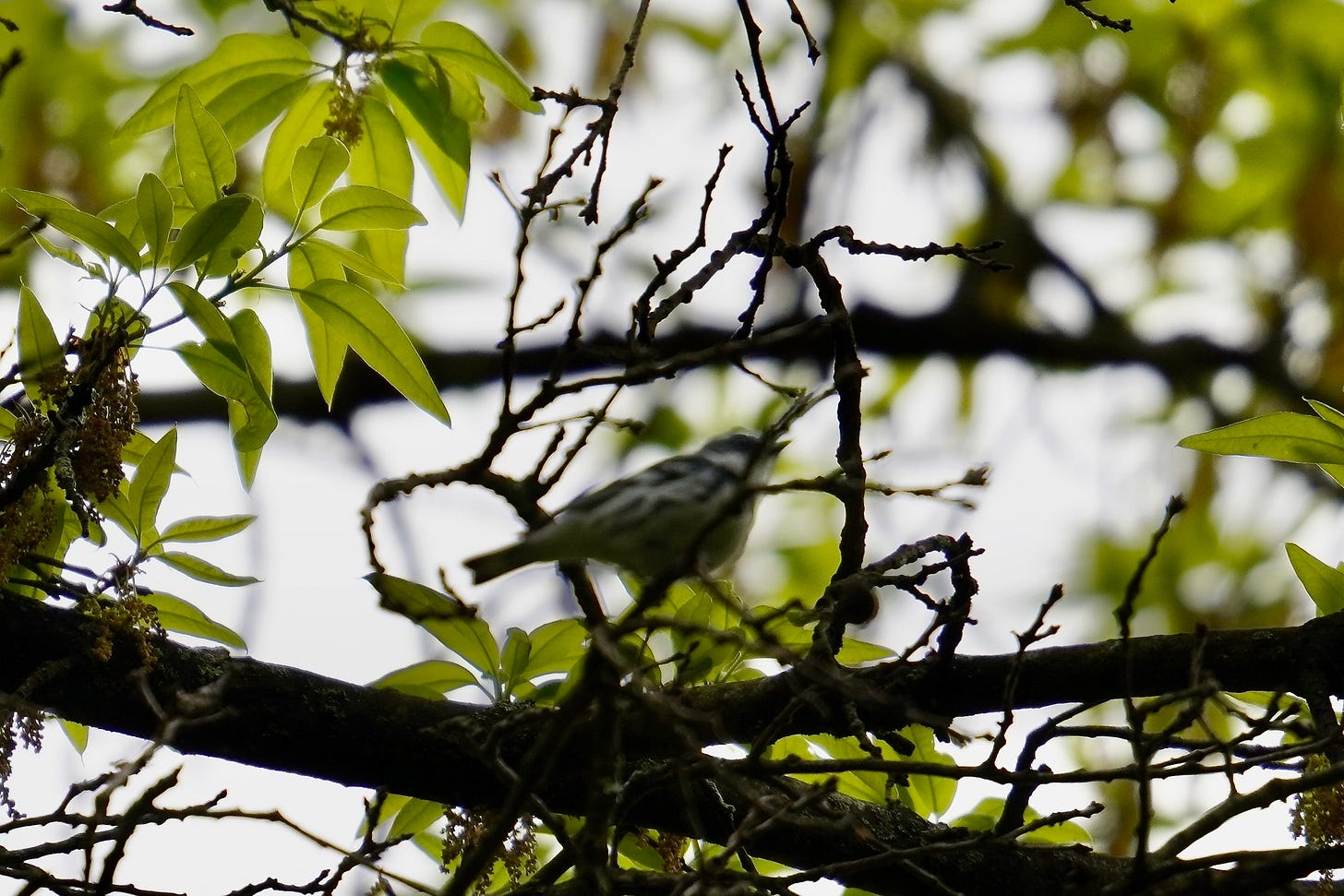
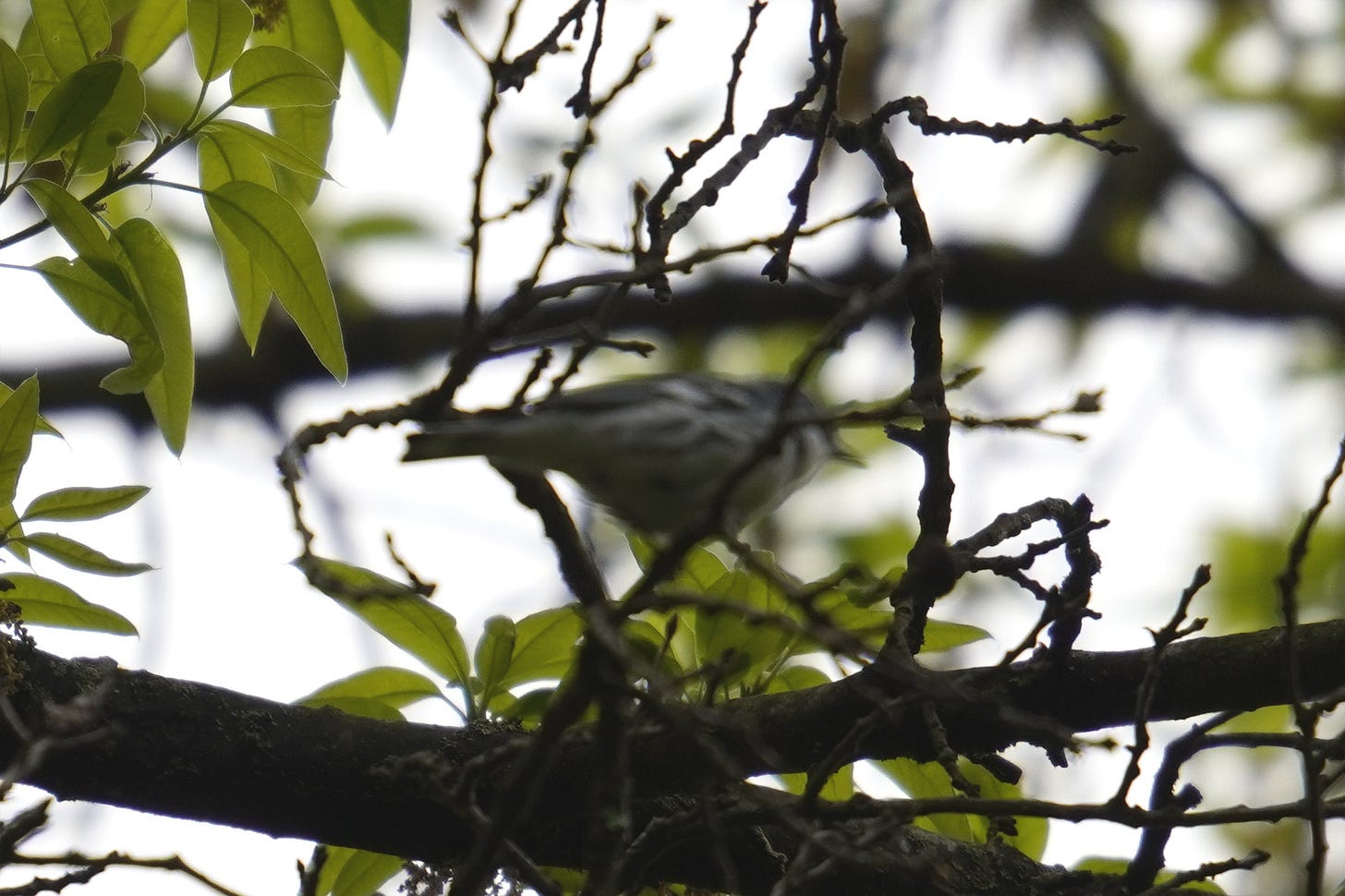
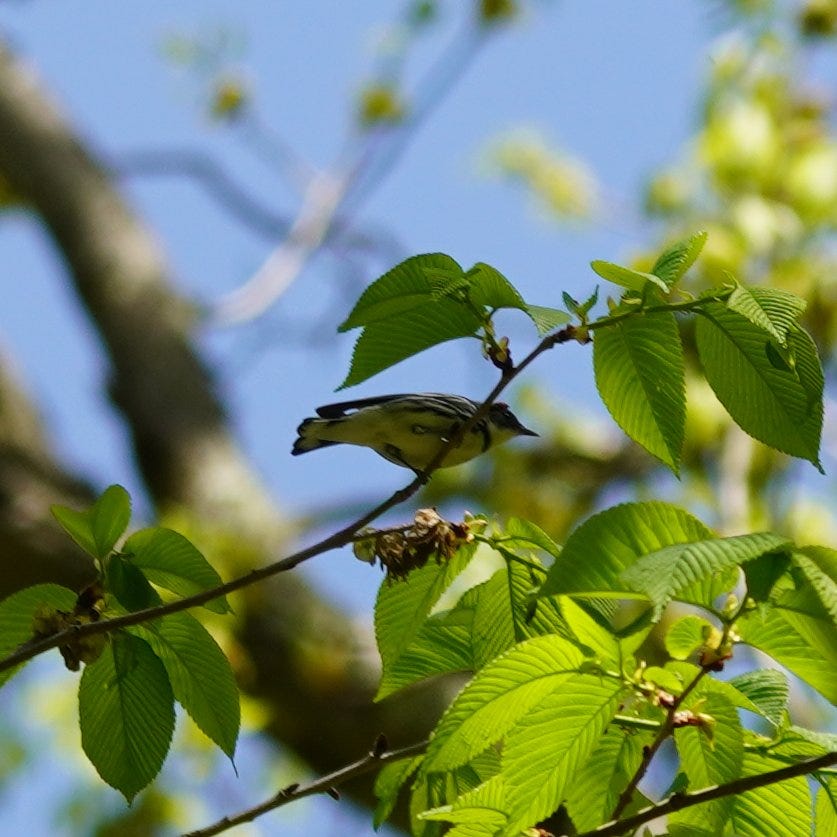



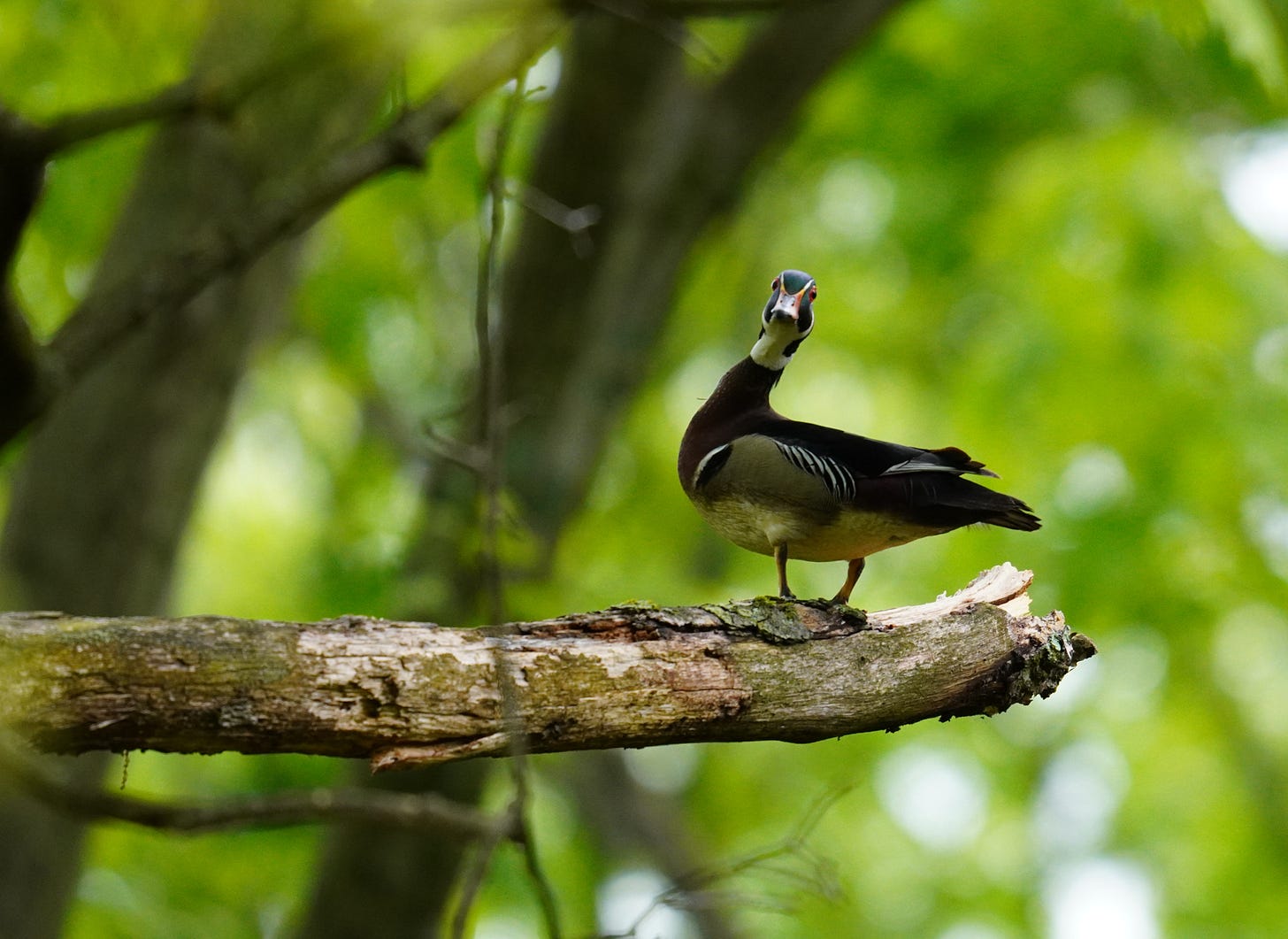
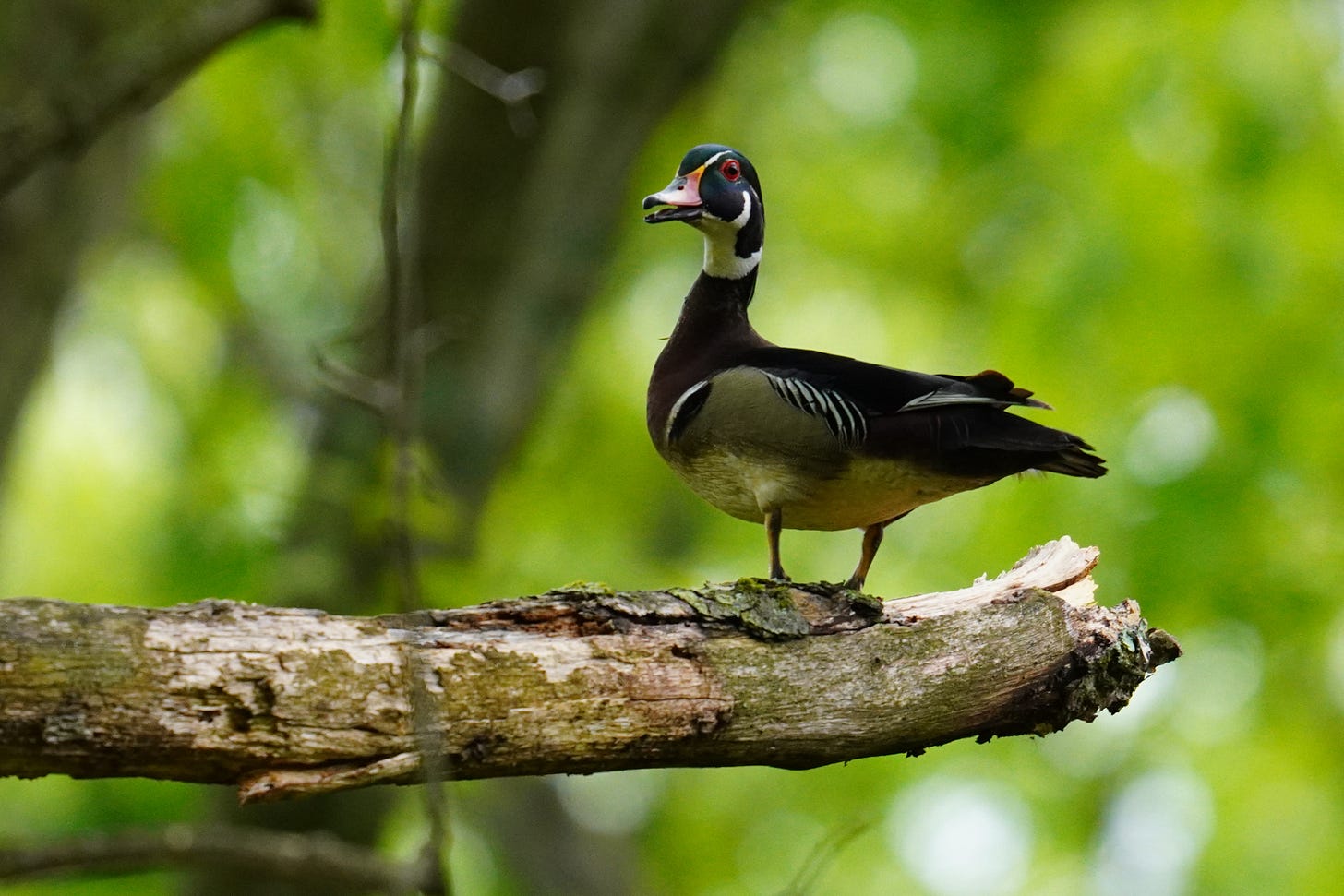
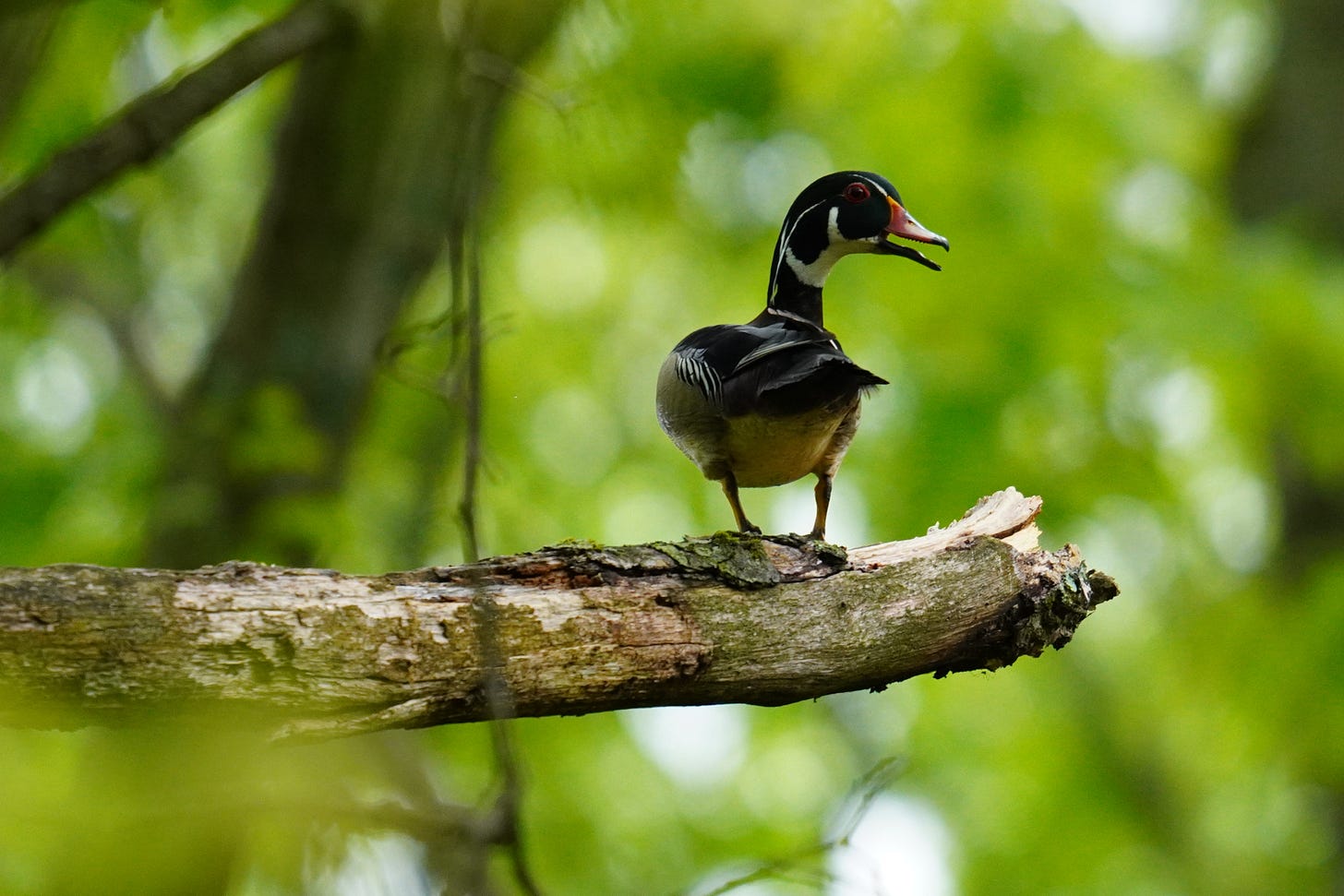
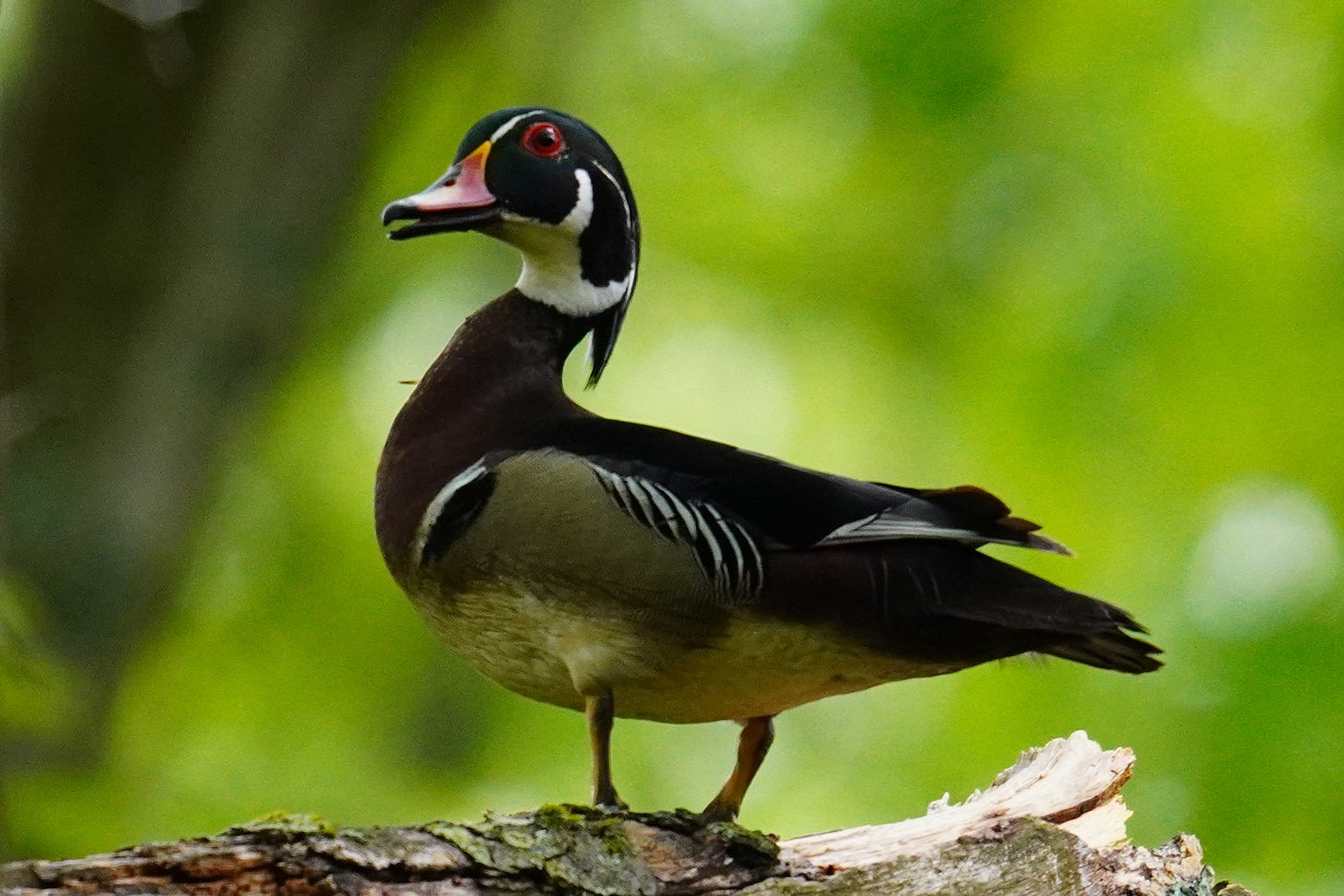
Love your adventures. Almost comical. I see a cerulean in lower frick on the fire trail walking parallel to the creek. Twice but not this year cuz I didn’t go. But maybe. 🐤🙋🏻♀️
Hold on. You set out to see and photograph a treetops warbler as elusive as the blackburnian warbler only bluer. I’m envious of your success and confused by talk of 3/4th. You do understand how fortunate you are? I've been told by an expert birder that we were hearing a Cerulean and that was fantastic for me. Besides, you’ve got incentives to continue the pursuit.